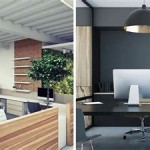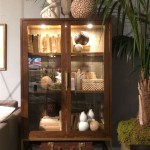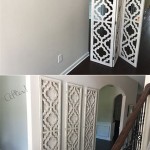Dark Grey Interior Decorating: A Sophisticated and Modern Approach
Dark grey, a hue often associated with sophistication and modernity, has steadily gained popularity in interior design. Its versatility allows it to seamlessly blend with various styles, from minimalist to industrial, while providing a dramatic backdrop for other design elements. This article explores the nuances of incorporating dark grey into your home décor, highlighting its advantages and offering practical tips for achieving a stylish and inviting space.
The Allure of Dark Grey
Dark grey possesses an inherent elegance that can elevate the ambiance of any room. Its rich and understated tone creates a sense of depth and drama, adding visual interest and a touch of luxury. As a neutral color, dark grey serves as a versatile backdrop for a wide range of color palettes, from vibrant accents to soft pastels. Its ability to absorb light can also make spaces feel cozier, making it ideal for bedrooms and living rooms.
The perception of dark grey can vary depending on its undertones. Cool grey tones, with hints of blue or purple, can create a calm and tranquil atmosphere, while warm grey tones, featuring brown or red undertones, exude a more inviting and sophisticated feel. The chosen undertone can significantly impact the overall mood and aesthetics of a room, so careful consideration should be given to the desired ambiance.
Utilizing Dark Grey in Different Spaces
Dark grey can be incorporated into various areas of the home, each offering unique opportunities for design exploration.
Living Room
In living rooms, dark grey can be used to create a sophisticated and inviting atmosphere. Consider using it for the walls, a statement sofa, or even a bold rug. To prevent the space from feeling too dark, incorporate lighter accents such as white furniture, metallic accents, or natural textures. Adding plants also helps to bring in life and brighten the room.
Bedroom
Dark grey is an excellent choice for bedrooms as it promotes relaxation and sleep. It can be used on the walls, headboard, or even a statement rug. Consider pairing it with soft textures such as velvet or linen for a luxurious feel. Adding a statement piece of artwork can also add visual interest to the room.
Kitchen
In kitchens, dark grey can create a modern and stylish look. It can be used for the cabinets, backsplash, or even the countertops. While dark grey can make a kitchen feel smaller, using it strategically can also make the space feel more sophisticated and curated. Consider incorporating light accents, such as white countertops or metallic hardware, to brighten the space.
Bathroom
In bathrooms, dark grey can create a spa-like atmosphere. It can be used for the walls, flooring, or even the vanity. Pairing it with natural textures such as wood or stone can enhance the sense of relaxation. Adding a few touches of greenery can also brighten the space.
Maximizing the Impact of Dark Grey
To fully embrace the potential of dark grey in your interior design, consider these key points.
1. Balancing Light and Dark
While dark grey creates a sense of drama, it's crucial to avoid overwhelming the space. Counterbalance the darkness with lighter elements, such as white trim, light-colored furniture, or strategically placed mirrors to reflect natural light. This creates a sense of visual balance and prevents the space from feeling claustrophobic.
2. Layering Textures
Dark grey's versatility allows for layering textures to create depth and visual interest. Combine smooth surfaces like a velvet sofa with textured elements, like a woven rug or a chunky knit throw. This interplay of textures adds a sense of richness and complexity to the room.
3. Incorporating Natural Light
Dark grey can absorb light, so it's essential to maximize natural light sources. Ensure that windows are uncluttered and allow ample natural light to illuminate the space. If natural light is limited, consider incorporating artificial lighting strategically to create a warm and inviting ambiance. Use a combination of overhead, ambient, and task lighting to ensure adequate illumination.
4. Adding Color Accents
Dark grey provides a neutral backdrop for incorporating pops of color that add vibrancy and personality to the space. Choose accent colors that complement the chosen undertone of the grey. For example, warm grey tones pair well with shades of yellow, orange, or red, while cool grey tones complement blue, green, or purple. Use color in accessories, artwork, or throw pillows to create a cohesive and stylish design.
Beyond the aesthetic appeal, dark grey offers practicality. Its ability to hide dirt and stains makes it an ideal choice for high-traffic areas, such as hallways and entryways. It also provides a sense of formality and sophistication, making it ideal for creating a refined and elegant atmosphere.
When navigating the world of dark grey interior decorating, remember to consider the overall style, lighting, and desired ambiance. By carefully incorporating this versatile hue, you can transform your home into a sophisticated and inviting space that reflects your personal taste and style.

Dark Themed Interiors Using Grey Effectively For Interior Design

Grey Living Room Ideas The Monochrome Home Abitare

Satisfy Your Dark Side With Black And Grey Interiors

My Scandinavian Home The Dark Side Of Decorating

Transform Your Home With Stunning Dark Interior Designs

Shaping Slick Dark Interiors With Black Grey Decor

Premium Photo Luxury Dark Living Room Interior With Gray Sofa Mock Up Modern Background Empty Black Wall Mockup 3d Ilration

Painting And Decorating Is Grey Dead Expert Advice

The Charcoal Grey Color Code You Need In Your Home Space Inredning Vardagsrum Grå Soffa Färg Design

My Scandinavian Home Dramatic Dark Greys In A Swedish Apartment Spot The Legs
Related Posts







